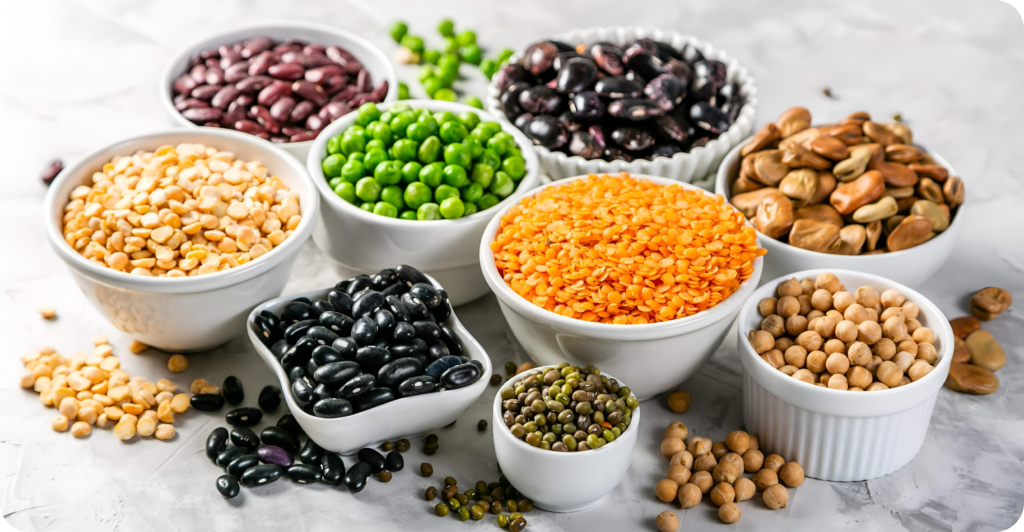The Future of Food: Why Protein Demand is Soaring
As the global population continues to grow, so does the demand for protein. In fact, it’s one of the most pressing challenges the food industry faces today. With health, sustainability, and consumer choice at the forefront of this transformation, the demand for protein has skyrocketed. But what exactly is driving this demand, and how can the food industry respond to meet these needs? Let’s explore the key factors behind the protein surge and why this is more than just a passing trend.

The Global Population Surge
By 2050, the world’s population will exceed 9 billion, which directly impacts the need for more protein. With more mouths to feed, protein-rich foods are becoming a necessity, especially in urbanizing areas. The growing need for accessible, affordable, and nutritious food is no longer optional—it’s an imperative. And as urbanization continues, consumers are increasingly turning to protein-dense diets. This is a massive opportunity for the food industry to innovate and scale solutions to meet the demand.
A Shift in Consumer Preferences
People today are more conscious about what they eat than ever before. Beyond simply providing nutrition, today’s consumers are seeking protein options that are healthier, more sustainable, and aligned with their ethical values. With the rise of plant-based alternatives and cultivated meats, traditional protein sources like meat are being replaced by these innovative products. This shift is reshaping the future of protein production, and it’s happening faster than many realize. Now is the time for the food industry to capitalize on this shift toward alternative proteins.
Sustainability Takes Center Stage
Sustainability is a driving force behind the rise of alternative proteins. Traditional meat production is a significant contributor to environmental damage, including deforestation, water waste, and greenhouse gas emissions. In contrast, plant-based proteins and cultivated meats offer a more sustainable way to meet the growing protein demand. They produce fewer emissions and use fewer resources, making them more environmentally friendly. The transition to these protein sources isn’t just necessary—it’s the future of food.
Health Benefits and Growing Awareness
As people become more health-conscious, the demand for leaner, healthier protein options is increasing. Protein is essential for bodily functions, from muscle repair to immune system support. However, the focus is shifting towards proteins that contribute to long-term health and wellness. Plant-based and cultivated proteins are positioned as healthier alternatives to traditional animal-based proteins, offering consumers high-quality nutrition without the associated health risks.
Innovation in Plant-Based and Cultivated Proteins
The real excitement lies in the innovation occurring within the plant-based and cultivated protein industries. These technologies are revolutionizing food production, offering products that taste, look, and feel like traditional meat while being healthier and more sustainable. From plant-based burgers to lab-grown chicken, the alternatives are diverse and growing rapidly. These innovations are opening up new markets, meeting the rising protein demand, and transforming the way we think about food. The opportunity for businesses to tap into this booming sector is immense.
Rising Economic Power in Emerging Markets
As economies in Asia, Africa, and Latin America grow, so does the middle class, which is increasingly shifting towards protein-rich diets. This opens up an entirely new market for protein-based products, both plant-based and animal-derived. Meeting this demand will require innovative solutions tailored to diverse consumer needs, but the potential for growth in these markets is immense.
What Does This Mean for the Food Industry?
The rising protein demand is more than just a challenge—it’s an opportunity for innovation. Companies that adapt to these shifts and embrace alternative protein solutions will be at the forefront of the next food revolution. From plant-based to cultivated proteins, the time to act is now.
The industry is at a critical juncture, and businesses must respond quickly to capitalize on this emerging trend. The demand for sustainable, healthy, and innovative protein products is not just a passing phase; it’s a long-term shift in consumer behavior.
Conclusion: The Future of Protein is Now
The demand for protein is growing at an unprecedented rate, and the food industry is being called to act. Whether through plant-based proteins or cultivated meats, these innovations are reshaping the future of food production. By embracing these solutions, businesses can not only meet the needs of today’s consumers but also shape the food landscape of tomorrow.
The opportunity to lead in this space is clear—and it’s available to those who innovate, adapt, and invest in the future of protein.



